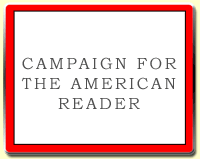 John Gittings's books include The Changing Face of China and 2012's The Glorious Art of Peace.
John Gittings's books include The Changing Face of China and 2012's The Glorious Art of Peace.One of five top books on peace he discussed with Alec Ash at The Browser:
The IliadRead about the other books Gittings discussed at The Browser.
by Homer (translated by EV Rieu)
You wanted to draw particular attention to book 18 – why?
I would say, first of all, that throughout The Iliad there is a counter-narrative of lost opportunities for peace. Obviously, if peace had been achieved there would have been no Trojan war or it would have come to an end sooner. But Homer reminds us from time to time that there were alternatives. There’s a very remarkable scene in book two, near the beginning, when the entire Greek army, misunderstanding a speech by their commander Agamemnon, turns on its heels and runs to the boats, hoping to go back home. Homer is telling us that the rank and file were not bent on fighting to the end. The Gods, on that occasion, intervene to stop the Greek army from sailing away. Even the wily Odysseus is unable to stop his men from launching their boats.
Book 18 is significant because it describes the making of a new shield for Achilles, who had withdrawn from battle. His friend Patroclus had borrowed his armour in his place and been killed, and his armour had been seized by the Trojans. So Achilles needed a new suit of armour, which was made for him by the heavenly blacksmith Hephaestus. If you read other accounts of Greek warriors, what you put on your shield is invariably something to frighten the enemy – a Gorgon’s head or a serpent or a wild lion. Homer instead describes a set of images on Achilles’s shield, almost all of which are concerned with peace not war – including young men and women dancing, labourers in the field bringing in the harvest grapes or ploughing the fields, and a council in which a case is arbitrated by peaceful means.This assembly of images, in my view, is designed to tell us that there is, or should be, a peaceful alternative to war.
So Homer, or whoever wrote The Iliad, had a peace agenda?
This is also an example of the passages in Homer which lead me to believe he was a single individual, because if it was stitched together from epic material then a scene such as the above would not appear – there would be stock images of a much more conventional shield instead. Homer, like Shakespeare, encompassed all humanity in his work, and in The Iliad he encompasses peace as well as war. A number of Homeric scholars have pointed out that the text, as we have it, is divided roughly into three thirds. The central third is almost entirely concerned with war and fighting. But the first third, where the plot is developed, is very different, and so is the final third. So the subject matter of The Iliad is war, but the feelings and emotions of the people concerned are much more complex.
The Iliad also appears on Becky Ferreira's list of her seven favorite tales of revenge in literature, the Barnes & Noble Review's list of five books on the Olympians, Madeline Miller's list of ten favorite classical works, Bettany Hughes's six best books list, James Anderson Winn's five best list of works of war poetry, and John Mullan's lists of ten of the best funerals in literature and ten of the best examples of ekphrasis. It is one of Karl Marlantes's top ten war stories.
The Page 69 Test: John Gittings's The Changing Face of China.
--Marshal Zeringue



